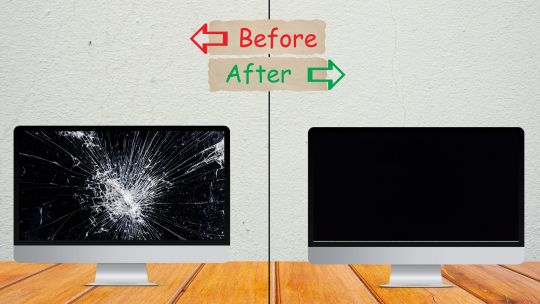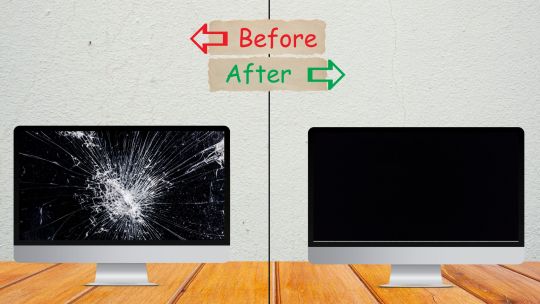Text

Is your computer or laptop screen acting up, frustrating your work and entertainment? Before rushing to a repair shop, take a moment to explore these troubleshooting steps which can potentially help you fix the issue yourself. From simply restarting your device to checking for loose cables, updating video drivers, and even addressing dead pixels, this comprehensive guide offers valuable solutions. Whether it's a hardware glitch or a software issue, this article provides insight and practical advice to help you tackle the problem head-on. Keep reading to equip yourself with the knowledge to troubleshoot and potentially resolve your computer or laptop screen issues. more
0 notes
Text
How to restart an HP laptop: The Ultimate Guide for Beginners

Is your computer or laptop screen acting up, frustrating your work and entertainment? Before rushing to a repair shop, take a moment to explore these troubleshooting steps which can potentially help you fix the issue yourself. From simply restarting your device to checking for loose cables, updating video drivers, and even addressing dead pixels, this comprehensive guide offers valuable solutions. Whether it's a hardware glitch or a software issue, this article provides insight and practical advice to help you tackle the problem head-on. Keep reading to equip yourself with the knowledge to troubleshoot and potentially resolve your computer or laptop screen issues.
How to Fix a Broken Computer or Laptop Screen
Dealing with a broken computer or laptop screen can be incredibly frustrating, especially when you rely on your device for work, studies, or entertainment. Before you head to the store or call a repair technician, there are several troubleshooting steps you can try to potentially fix the screen yourself. Follow these steps and stop once you see improvement; if the problem recurs, simply return to the list and try the remaining fixes.
Restart Your computer or Laptop
Restarting should be your first step, as it is quick and often effective. Your screen might not be working due to a simple operating system glitch that a reboot can resolve. Hold down the power button and restart Laptop your machine to see if the issue persists.
Examine and Clean the Keyboard and Screen Areas
Dust and debris can accumulate in the keyboard area and screen hinges, potentially causing functional issues. Thoroughly clean these areas, especially if your laptop uses a visible latch mechanism. Use compressed air or a gentle brush to remove any particulates.
Close and Reopen the computer or Laptop
If your screen intermittently turns on and off, try closing and then reopening your device. This can indicate a bad lid sensor. Ensure you close the laptop completely, then open it again to see if the screen issue resolves.
Connect an External Monitor
If your laptop screen is entirely black, plug in an external monitor. If the external monitor displays correctly, your issue is likely with the laptop screen itself, not the system. If the external monitor also remains blank, the computer or laptop may be in sleep or hibernation mode. Ensure the device is powered on and connected to a power source.
Update Your Video Card Drivers
Screens with visual defects but not entirely black could be suffering from outdated or malfunctioning video drivers. Access the settings of your computer or laptop and check for any available updates for your video card drivers. Installing the latest updates could fix the problem.
Fix Dead Pixels

Dead or stuck pixels can create tiny but noticeable issues. Specialized apps can help by cycling through colors rapidly or generating digital snow to stimulate the affected pixels. Run these apps to see if they revive the unresponsive pixels on your screen.
Fix Screen Burn-In
Old images "ghosted" onto your screen could indicate screen burn-in. You can reduce or eliminate this issue by running a white screen saver or using apps designed to remove burn-in. These methods often involve displaying a solid white screen for an extended period to clear the remnants of old images.
Check Screen and Backlight Connections
If you have technical skills and are comfortable disassembling your computer or Laptop parts, you can check the screen and backlight connectors. Carefully remove the bezel or hinge covers to access the cables, ensuring all connections are secure. Look out for any crimped or broken cables that might need replacement.
Replace the Screen
If none of the previous steps work, replacing the screen might be your only option. Large black or colored bars, black holes, or running colors generally indicate irreparable damage. A cracked screen also suggests the need for replacement. You can find replacement screens online or through the manufacturer; however, professional installation might be necessary if you need clarification.
How to fix a cracked Computer or Laptop without replacing
If your broken computer or laptop screen is cracked, it's essential to acknowledge that such physical damage typically can't be repaired; replacement is the only viable solution. For those with a knack for electronics, purchasing a replacement screen from a retailer like Amazon and personally undertaking the replacement can be cost-effective. However, this DIY route is only recommended if you're confident in your electronic repair skills. It involves delicate procedures like disconnecting and reconnecting fragile connectors and handling sensitive electronic components. If done incorrectly, you could cause further damage. Therefore, it's crucial to understand the potential risks and seek professional help if you need clarification on the repair process.
It may not be a screen problem.
When your Laptop's screen doesn't display anything, it's tempting to assume the screen itself is the culprit. However, various factors could be responsible. Understanding these factors gives you a sense of control over the situation.
Firstly, check if the screen is indeed broken. It might be dead if the Laptop doesn't respond when pressing the power button. Ensure it's fully charged and try again. Specific steps apply to external monitors. Refer to guides on testing a computer monitor that isn't working, as the issue might not be with the monitor itself.
If the laptop screen remains black, watch as you power it on. Hearing the Laptop and seeing error messages indicate a different problem. Consult resources on how to fix startup errors, such as "How to Fix Errors Seen During the Computer Startup Process."
Conversely, if no sounds or lights are coming from the Laptop, even when plugged in, the issue might be related to a faulty battery or power connection. In such cases, investigate power supply issues or consider battery replacement. Following these steps, you can accurately diagnose and resolve the problem without immediately blaming the screen.
A physically broken laptop screen is typically due to physical damage caused by drops or objects impacting the screen. Small particles like sand can get between the keyboard and the screen, leading to significant damage. However, not all screen issues result from physical trauma.
Other factors that can cause a laptop screen to malfunction include:
Stuck Pixels: Small areas of the screen stuck on one color.
Screen Burn: Permanent discoloration from static images.
Malfunctioning Backlight: Resulting in a dim or dark screen.
Cable and Connector Problems: Loose or damaged internal connections.
Outdated Drivers: Software issues that impact screen performance.
Conclusion
Fixing a broken or malfunctioning computer or laptop screen requires a mix of troubleshooting, patience, and, sometimes, technical skills. Patience is critical in these situations, helping you stay calm and composed as you work through the steps. Whether your screen suffers from software glitches, hardware issues, or physical damage, the steps outlined can help you identify and resolve these problems. However, severe physical damage, like a cracked screen, usually requires replacement. Consider your comfort level with technical tasks before attempting repairs, and do not hesitate to seek professional assistance.
FAQ
How much does it typically cost to replace a laptop screen?
The cost can vary widely depending on the make and model of your Laptop. On average, replacement screens can cost between
Can I use my Laptop with an external monitor if the screen is broken?
Yes, as long as the Laptop is functioning, you can connect it to an external monitor using an HDMI, VGA, or DisplayPort cable. This is a temporary or long-term solution, depending on your preference.
Is it difficult to replace a laptop screen?
The difficulty level depends on your laptop model and your comfort with electronic repairs. Many guides and video tutorials are available online, yet the process involves delicate handling of small components.
What should I do if my screen has flickering issues?
Flickering can be caused by loose cables, outdated drivers, or hardware issues. Check and secure all screen connections, update your video drivers, and test with an external monitor to isolate the problem.
Are there risks to replacing a laptop screen myself?
Yes, incorrect handling can cause further damage to your Laptop. Common risks include damaging internal cables, mishandling the delicate LCD, or static electricity damage. Always proceed with caution and consult detailed guides.
#Computer Monitor Crack Repair#Repairing Laptop Screen DIY#Computer Screen Fixing Tips#Replace Damaged LCD Screen#Laptop Screen Repair Instructions
1 note
·
View note